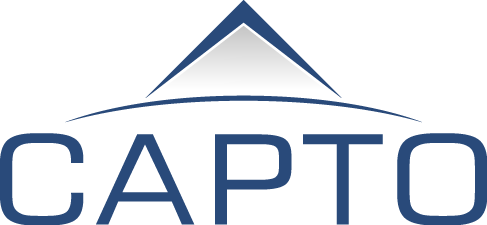OCM: Getting a Lift from the Shift
For those of us in the business of making sourcing decisions, organizational change management (OCM) has been part of the conversation for a while. People understand, in theory at least, that OCM is something they ought to do, but they often place it low on the priority list. In fact, we’ve noticed that unless a company has experienced first-hand the ill effects of not preparing their organization properly for transformational change, they will continue to treat OCM as just another item to check off from a lengthy list.
Our approach at CAPTO is quite different as we encourage our clients to learn from things we have witnessed in the past, relying on our experience not just their own. If a firm really wants to improve business and operational outcomes, the OCM discussion has to happen much earlier in the process. It also needs to be viewed as a continuum—an ongoing effort that needs to be thought about proactively and in a disciplined manner.
OCM requires a mindset shift. Here are a few things we’ve identified as success factors.
SYNAPTIC Shift Left: Thinking about how the changes impact the organization and how to get everyone on-board is something that should be considered from the start. For a sourcing initiative to be successful, OCM needs to be “shifted left” on the timeline. That is OCM must be addressed early in the process.
Take a look at the snapshot of our SYNAPTIC sourcing process on the rignt. You can see that the various activities all sit on top of Communications / OCM. We start preparing our clients mentally for this shift to the left during project kick-off meetings. Early preparation is also important because having the correct mindset is a success factor in the first key activity, the assessment.
Assessment Informs OCM: In the piece we wrote about the assessment process, we talked about how we take a horizontal view of the client’s environment and analyze each major area in IT with respect to sourcing to help identify the underlying problems. When you keep OCM in the back of your mind as you conduct the assessment (which includes many interviews with in-house staff as well as with partners), your ears quickly become attuned to potential stumbling blocks related to the staff, such as: skills required, historical factors, numbers affected, and integration points.
More importantly, you get a sense for the organization’s tolerance for change, including their ability to absorb it and at what rate, as well as what the risks are if the changes don’t occur.
The output from our assessment work feeds the “O” in OCM—showing us what the organization needs to do to accelerate acceptance and achieve optimal outcomes. Assessment also sensitizes leaders to organizational morale and the importance of letting each person involved know (and accept) how the change will impact them on a personal level.
Laying the proper groundwork is key, but proactively measuring and monitoring activities related to the initiative is equally important.
Think about Metrics
You may be familiar with the adage:
“If you can’t measure it it, you can’t manage it”
Spending the time needed to develop meaningful metrics is indeed time well-spent. Again, a shift left is needed, for this should be done earlier in the process.
The creation and implementation of good metrics isn’t a one-time function either. It’s a continuous process:
Define: Identify which metrics will be the most useful for tracking success.
Mine: Extract and track the data, then analyze it to generate actionable information.
Utilize: Train the staff to use the data, placing an emphasis on how that data helps keep their activities aligned with overall business and operational objectives.
Refine: Adapt, adjust, and fine tune the metrics to increase their usefulness.
If they are to succeed, organizations making sourcing transformations must have a disciplined way to measure success, one that can be adapted and adjusted to fit the dynamics of the conditions that exist throughout the various stages of program rollout.
Proactively Iterate
Successful outcomes are contingent on making adjustments as needed. You’ll see that our SYNAPTIC approach features multiple loop-back opportunities. It is really important to proactively manage and adapt as necessary. You don’t want to be twelve to eighteen months into a process before realizing something isn’t right—that’s a waste of valuable time and money. By proactively looping back, you can make the sort of “in-game” adjustments that professional sports teams do to change the dynamics of the match.
Communicate Early & Often
Organizations that are successful in implementing sourcing decisions take a disciplined approach to communicating with both in-house teams and with their partners / vendors). John Kotter, a expert in the field from Harvard, has said, “One of the most common ways to overcome resistance to change is to educate people about it beforehand. Communication of ideas helps people see the need for and the logic of change.” Changing the communications dynamics is another vitally important shift we help our clients make.
In fact, we think about OCM we consider all of these components:
No matter how large or small, if an initiative is to lead to successful business and operational outcomes OCM and communications have to be part of your thinking from the outset. You have to prepare your organization to work differently, to manage differently, and to execute differently. That involves a significant shift from the way you may have done things in the past, but we know from working through successful transitions with our clients that the lift you will get from this type of shift is well worth the effort—resulting in meaningful payoffs down the road.
